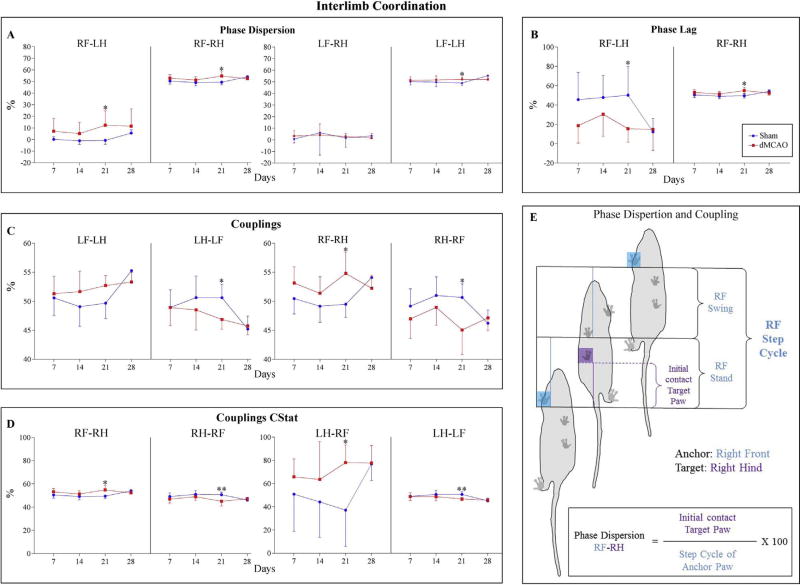Fig. 7.
Temporal relationship between two paws within a Step Cycle is significantly affected in dMCAO animals compared with the Sham group. A) Graphs demonstrate either Right Front Paw (RF) or Left Front Paw (LF) acting as anchor paws in Phase Dispersion Parameter. B) Phase Dispersion calculated as a Circular Variable (CStat) is more accurately defined by the term Phase Lag. Graphs demonstrate Right Front Paw as the Anchor paw. C) Couplings describe the temporal relationship of two paws. Couplings are computed the same way as Phase Dispersion, but a Target Paw can never precede an Anchor. Graphs reveal statistically significant differences between dMCAO and Sham animals; the difference was more robust at 21 days, in the pairs involving either Right or Left Front paws (RF, LF). D) Similarly to Couplings, Circular Variable (CStat) in the dMCAO group was significantly altered at 21 days, when compared to Sham animals. E) Schematic representation of the calculations (expressed as%) of the Phase Dispersion and Coupling parameters for the pair RF-RH, in which RF acts as an Anchor Paw (blue) and RH as a Target paw (purple). Values are represented as mean ± SD. Parameters were analyzed using a linear mixed-effects (LME) model, * p≤ 0.05, ** p ≤ 0.01. P-values were adjusted by Benjamini Hochberg (BH) correction.

